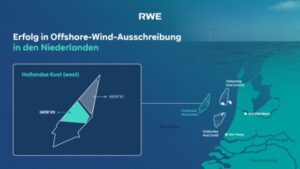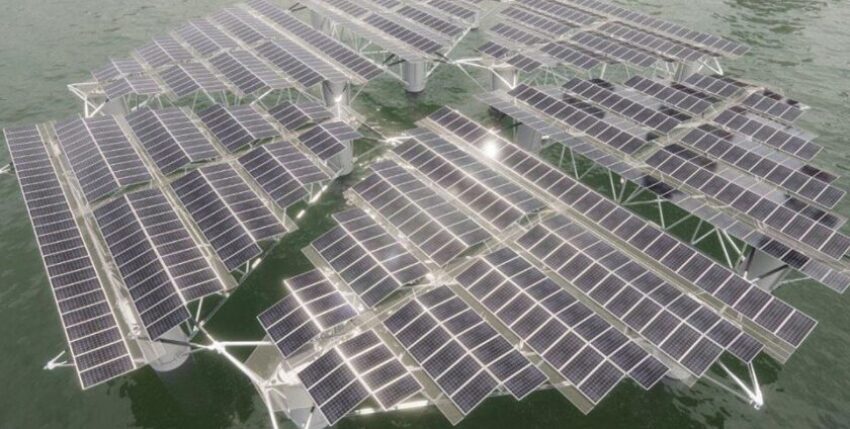The Nautical Sunrise project is an initiative of various energy companies and specialists in the fields of wind and solar energy as well as offshore floating solar (OFS) in order to close important knowledge gaps relating to the design and environmental impact of offshore solar energy. Various university departments are therefore also involved.
The project for the world's largest floating offshore solar energy system was launched in December 2023, is expected to cost 8.4 million euros and is being funded by the Horizon Europe research framework programme with 6.8 million euros to advance research and development of OFS and its components.
This project aims to design and build a 5 megawatt floating offshore solar system as a modular solution by SolarDuck, the Dutch-Norwegian specialists in OFS, while RWE will provide the investment for installation and deployment. It is planned that the system will be installed at the OranjeWind wind farm off the west coast of the Netherlands.

Extensive research and testing will confirm the reliability, survivability, electrical stability and yield of floating offshore solar systems. A scale-up plan will address the challenges for gigawatt systems and create opportunities to drive the commercialisation of OFS.
The project will also analyse and evaluate the environmental footprint and sustainability of the entire life cycle of floating offshore solar systems.
The results from science and research will only be available in a few years' time; the floating offshore solar system Nautical Sunrise is scheduled to go into operation in 2026.
Source: SWZ Maritime











5 responses
I am very excited about the results of this experiment, perhaps it will set new standards
This is breathtaking. This is the future, thanks for the contribution.
I don't quite understand why a solar power plant is being built at sea and not a wind power plant. A wind power plant can produce electricity almost 24/4, whereas a solar power plant can only produce electricity during the day. That makes sense on land on houses and in densely populated areas, but why on the high seas?
Dear Mr "Martin", thank you very much for your comment.
The article is about a pilot project that aims to close important knowledge gaps in the field of offshore solar energy. Further questions and answers can then be derived from the results, which will only be available in a few years' time.
Now specifically to your question. Historical weather data shows a negative relationship between the electricity yield of wind and sun. This means that the solar yield is often low when the wind is strong, but high when it is calm. The two energy sources therefore complement each other. And without having to invest in additional power lines. According to transmission system operator Tennet, the lines to the mainland are only utilised to around 40 percent capacity on average. If solar power plants are connected to the grid alongside wind turbines, capacity utilisation increases, which reduces the cost per kilowatt hour of electricity generated.
Klaus Klages
Editorial team marineforum.online
Thank you for your feedback.
Sure, that makes sense and basic research is always good.
Ultimately, the price will decide whether onshore or offshore solar systems are more economical. I think the possibilities on land (especially roof surfaces) are far from being fully utilised.